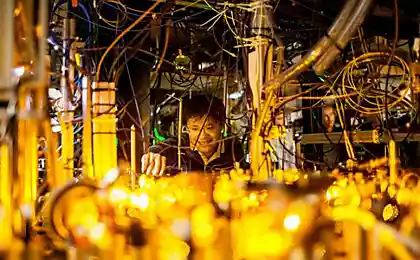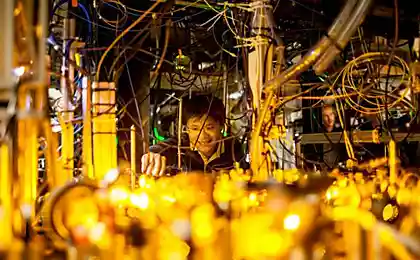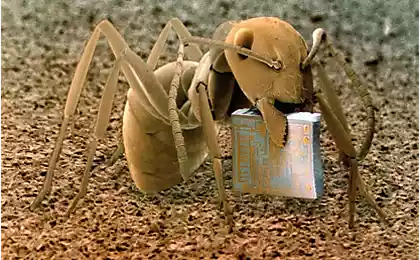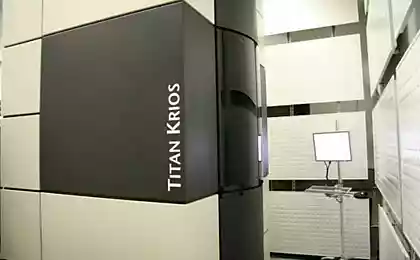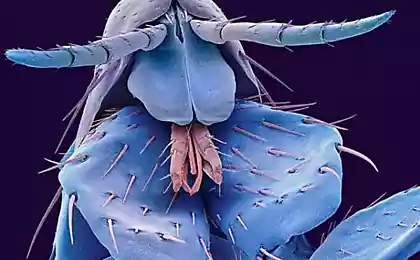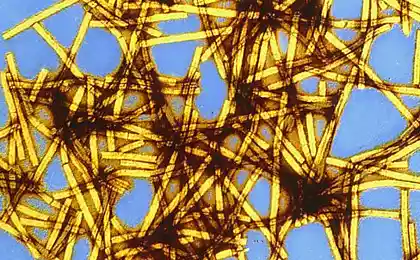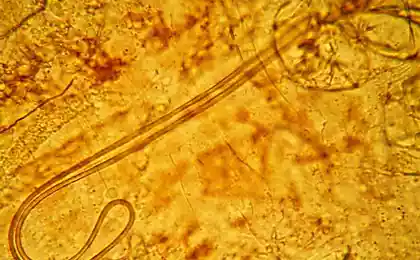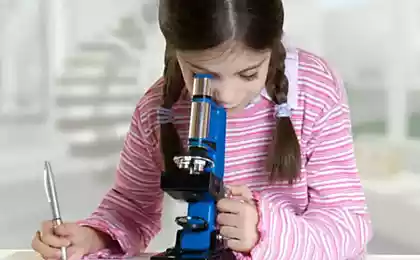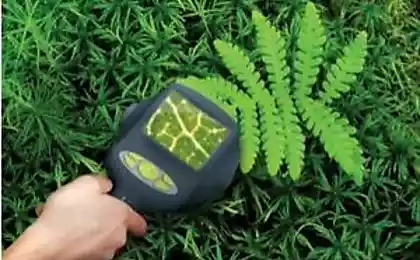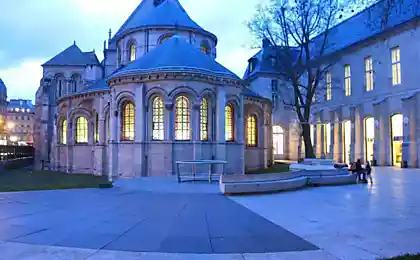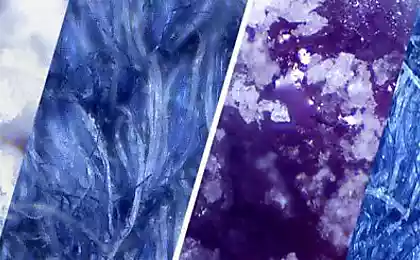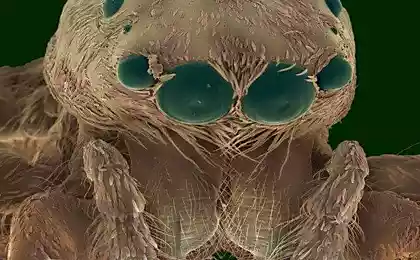4083
Fig-
Mel
If this image reminds you of sea shells, that's because it is. Mel - the product of marine phytoplankton, which converts carbon dioxide and sunlight into calcium carbonate called coccoliths. For centuries, these microscopic skeletons accumulate and compressed under pressure to form a sedimentary rock, ideal for writing on wooden boards.
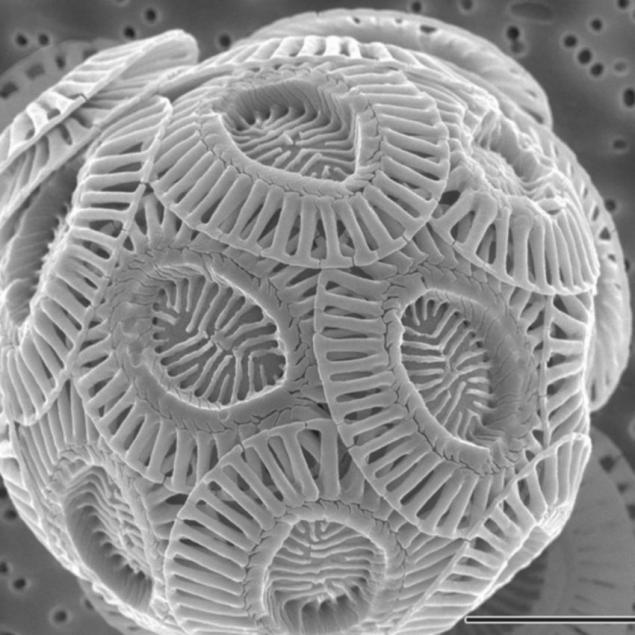
The human eye
Closeups eyeballs remind us of the camera shutter, made from organic fabrics. Colored iris controls the flow of light to the retina by adjusting the diameter of the bolt. Eyes may be one of the most beautiful features of the human body, but when you shop closer, you'll be shocked to their views, more reminiscent of the alien landscape of the crater than the human eye.
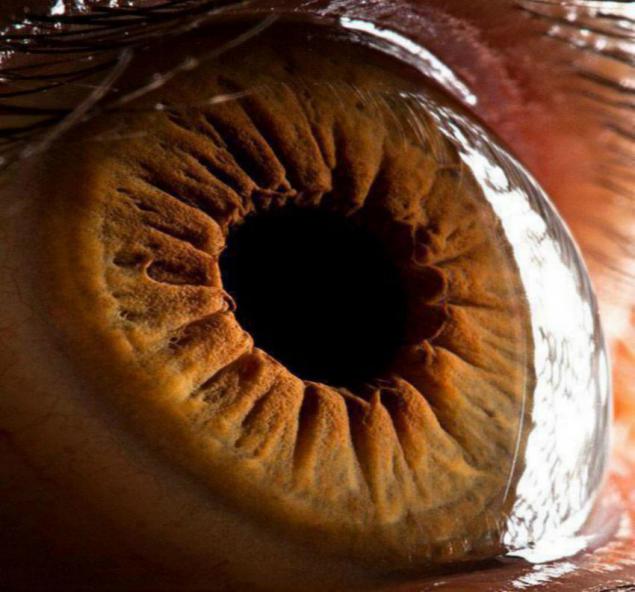
A drop of seawater
After that, the macroscopic photo your life will go one of two ways: either you will never enjoy the beaches, or enjoy will become even more after learning that covered millions of tiny animals that live in the sea water. This is not a prehistoric cave paintings, not a masterpiece of abstract art. This photograph taken by National Geographic photographer David Liittshvagerom where a drop of sea water increased only 25 times. The result was amazing planktonic universe.
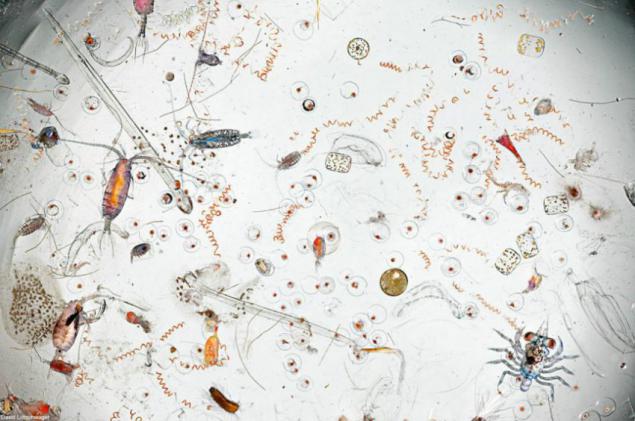
Snowflake
Gorgeous snowflakes geometry makes them the perfect subject for microscopic photo. You can almost feel their correct geometry of the universe as if hexagonal sculpture that will never be repeated. Picture taken by a special macro, and displays all the beauty of this wonder of nature in an enlarged form.
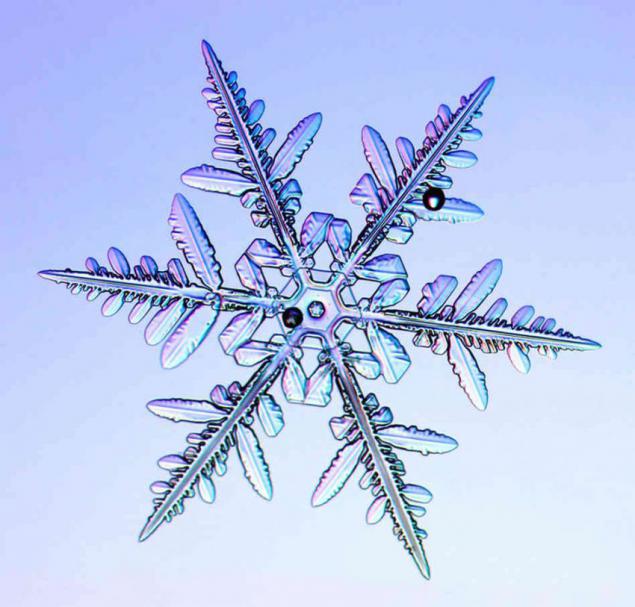
The head louse
Imagine that you do not know what is shown in the photo. You may think that this is a crab, scorpion, or even a sloth ... But in fact it is the length of the head louse just 3 mm, an increase of about 200 times. According to rough estimates, about 6 - 12 million of these creatures annually extracted from the hair of children in the US alone. This specimen was distracted for a moment to pose for the microscope, and then proceeded to lay eggs and crawl under a lot of hair.
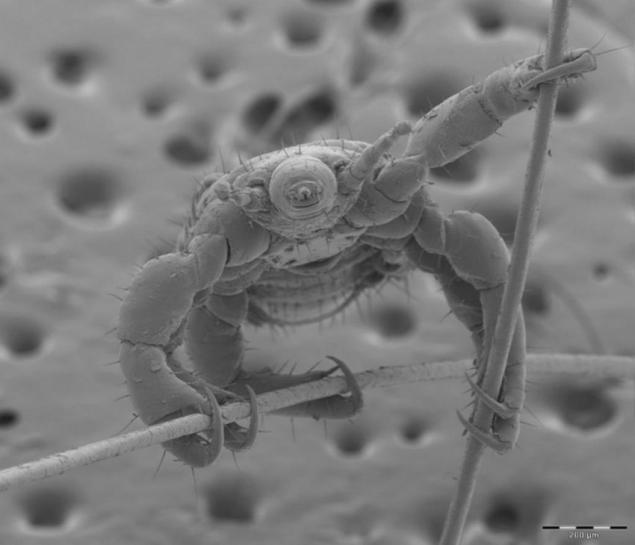
Tardigrades
It is considered the most tenacious creature on earth, for which it is also called water bears. Talents survival tardigrades include the ability to live at temperatures just above absolute zero and higher than the boiling point of water. Being able to withstand a pressure up to six times greater than the ocean depth, the levels of radiation, one hundred times the lethal dose for humans, and to survive in space. Drawing a line between the water Medvedev and any other living creature, the 5 mm eight-legged animals can somehow cope with about everything that kills any living creatures on the planet, including the lack of food and water for more than 10 years. If you want to find tardigrades, grab a microscope and examine areas of moss and lichen - success will be guaranteed.
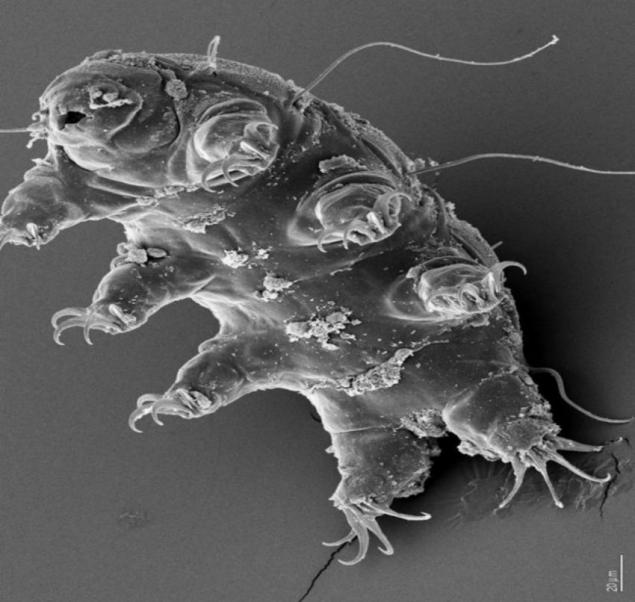
Floss
The used yarn was increased by 525 times. Pink substance - a substance formed from saliva and bacterial discharge, also known as plaque. The bacteria in plaque eat your microscopic residues and recovered acid on your teeth that causes decay. Do not panic: it is - just the way nature to make sure that you and your teeth will not live forever. Thus the cycle of life is maintained.
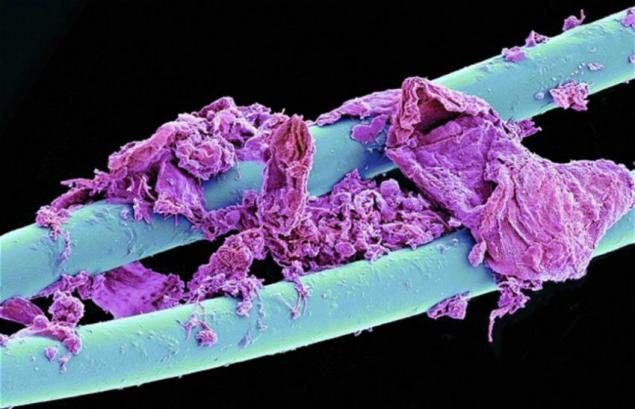
Embryo tsiplenka
This is - a tiny chicken. The embryo is so tiny that a fully transparent. He has not even developed a real leather, not to mention the feathers. The embryo is just sitting in the egg, absolutely nothing thinking. Taken with 6-fold magnification using a stereomicroscope. This image won first place in the popular vote of the photographic competition Nikon Small World.
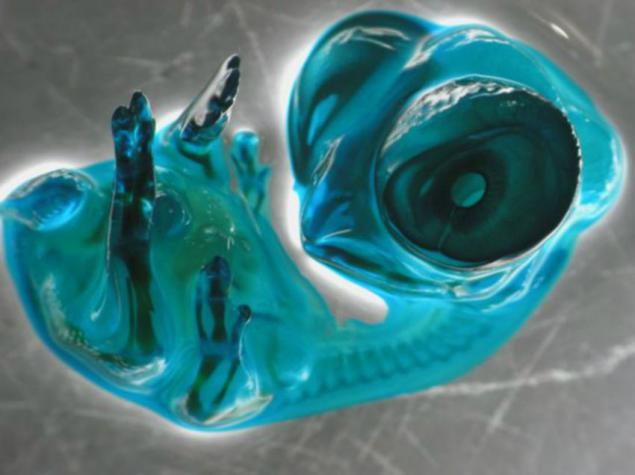
Ciliary demodex
If you are going to survive in this world, we must understand that many things can be really disgusting. Most people have a ciliated demodex mites living around your ciliated pods. They eat dead skin cells sweat and drink, and then lay eggs in your microscopic hair follicles. In ciliated mite have little claws, and it can not be derived. Wiping will not work as the washed eyes - they can not win.
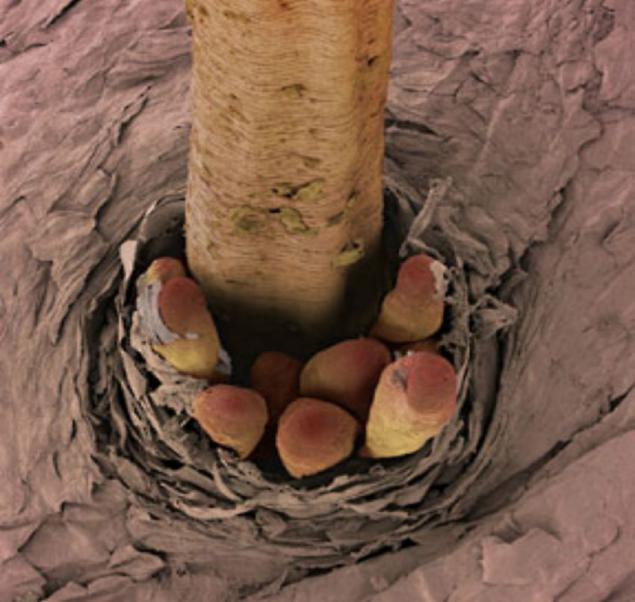
Velcro
Pretty is not difficult to imagine how the velcro, seeing her enlarged 22 million times. It turns out she had an amazingly simple design. On one side are the microscopic hooks, and with another - loops, which create together a solid connection. Invented by Swiss engineer in 1940, their microscopic elegance made with velcro staple of countless industries.
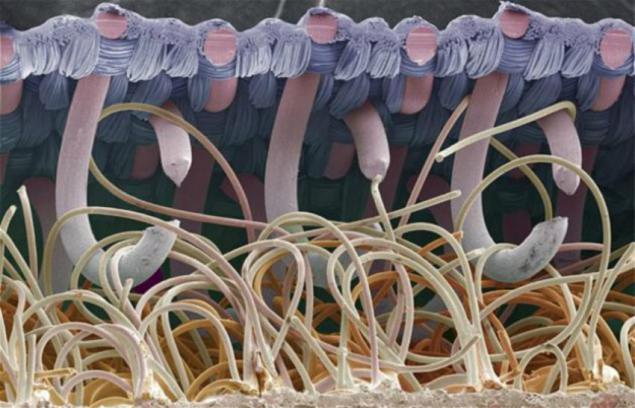
Toilet paper
This image is magnified 500 times, shows the woven plant fiber which form the compounds of all kinds of paper. The geometry of the cells of the tree with ideal building blocks ideal for absorbing anything you want. In the production of toilet paper wood fibers are separated from the wood, slightly damaged, to make them more flexible and softer look.
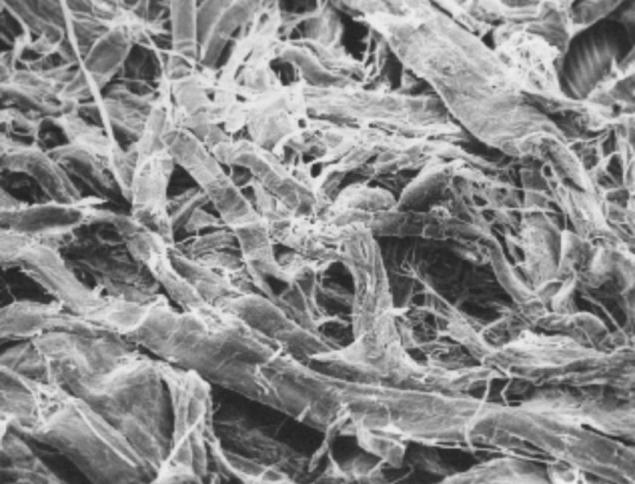
Cigarette paper
In the cigarette industry basically only have one job: to deliver nicotine to the blood system of people. They get a huge profit from the drug masses. Interesting fact: in cigarettes even paper cut so to improve the experience of smoking. These microscopic blue crystals attached on porous paper surface are additive, producing oxygen and contributing to long burning.
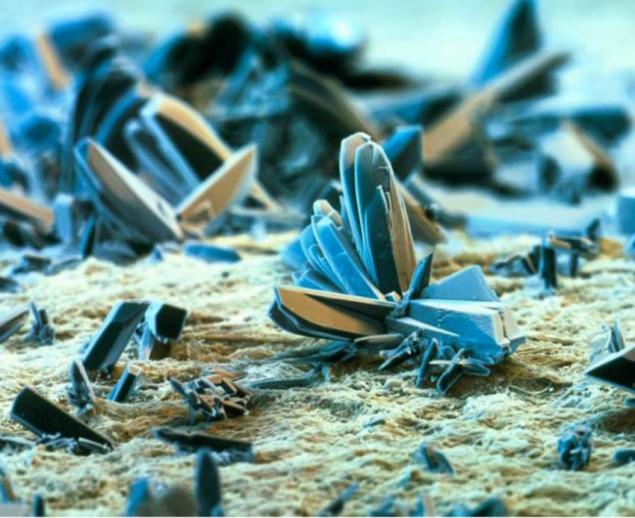
Source: lifeglobe.net
If this image reminds you of sea shells, that's because it is. Mel - the product of marine phytoplankton, which converts carbon dioxide and sunlight into calcium carbonate called coccoliths. For centuries, these microscopic skeletons accumulate and compressed under pressure to form a sedimentary rock, ideal for writing on wooden boards.

The human eye
Closeups eyeballs remind us of the camera shutter, made from organic fabrics. Colored iris controls the flow of light to the retina by adjusting the diameter of the bolt. Eyes may be one of the most beautiful features of the human body, but when you shop closer, you'll be shocked to their views, more reminiscent of the alien landscape of the crater than the human eye.

A drop of seawater
After that, the macroscopic photo your life will go one of two ways: either you will never enjoy the beaches, or enjoy will become even more after learning that covered millions of tiny animals that live in the sea water. This is not a prehistoric cave paintings, not a masterpiece of abstract art. This photograph taken by National Geographic photographer David Liittshvagerom where a drop of sea water increased only 25 times. The result was amazing planktonic universe.

Snowflake
Gorgeous snowflakes geometry makes them the perfect subject for microscopic photo. You can almost feel their correct geometry of the universe as if hexagonal sculpture that will never be repeated. Picture taken by a special macro, and displays all the beauty of this wonder of nature in an enlarged form.

The head louse
Imagine that you do not know what is shown in the photo. You may think that this is a crab, scorpion, or even a sloth ... But in fact it is the length of the head louse just 3 mm, an increase of about 200 times. According to rough estimates, about 6 - 12 million of these creatures annually extracted from the hair of children in the US alone. This specimen was distracted for a moment to pose for the microscope, and then proceeded to lay eggs and crawl under a lot of hair.

Tardigrades
It is considered the most tenacious creature on earth, for which it is also called water bears. Talents survival tardigrades include the ability to live at temperatures just above absolute zero and higher than the boiling point of water. Being able to withstand a pressure up to six times greater than the ocean depth, the levels of radiation, one hundred times the lethal dose for humans, and to survive in space. Drawing a line between the water Medvedev and any other living creature, the 5 mm eight-legged animals can somehow cope with about everything that kills any living creatures on the planet, including the lack of food and water for more than 10 years. If you want to find tardigrades, grab a microscope and examine areas of moss and lichen - success will be guaranteed.

Floss
The used yarn was increased by 525 times. Pink substance - a substance formed from saliva and bacterial discharge, also known as plaque. The bacteria in plaque eat your microscopic residues and recovered acid on your teeth that causes decay. Do not panic: it is - just the way nature to make sure that you and your teeth will not live forever. Thus the cycle of life is maintained.

Embryo tsiplenka
This is - a tiny chicken. The embryo is so tiny that a fully transparent. He has not even developed a real leather, not to mention the feathers. The embryo is just sitting in the egg, absolutely nothing thinking. Taken with 6-fold magnification using a stereomicroscope. This image won first place in the popular vote of the photographic competition Nikon Small World.

Ciliary demodex
If you are going to survive in this world, we must understand that many things can be really disgusting. Most people have a ciliated demodex mites living around your ciliated pods. They eat dead skin cells sweat and drink, and then lay eggs in your microscopic hair follicles. In ciliated mite have little claws, and it can not be derived. Wiping will not work as the washed eyes - they can not win.

Velcro
Pretty is not difficult to imagine how the velcro, seeing her enlarged 22 million times. It turns out she had an amazingly simple design. On one side are the microscopic hooks, and with another - loops, which create together a solid connection. Invented by Swiss engineer in 1940, their microscopic elegance made with velcro staple of countless industries.

Toilet paper
This image is magnified 500 times, shows the woven plant fiber which form the compounds of all kinds of paper. The geometry of the cells of the tree with ideal building blocks ideal for absorbing anything you want. In the production of toilet paper wood fibers are separated from the wood, slightly damaged, to make them more flexible and softer look.

Cigarette paper
In the cigarette industry basically only have one job: to deliver nicotine to the blood system of people. They get a huge profit from the drug masses. Interesting fact: in cigarettes even paper cut so to improve the experience of smoking. These microscopic blue crystals attached on porous paper surface are additive, producing oxygen and contributing to long burning.

Source: lifeglobe.net

